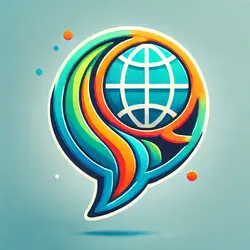The Importance of Educational Resources in Learning
Educational resources play a crucial role in the learning process, providing students with tools and materials to enhance their understanding and grasp of various subjects. These resources come in many forms, ranging from textbooks and online articles to interactive software and multimedia presentations.
One of the key benefits of educational resources is their ability to cater to diverse learning styles. While some students may excel through traditional methods such as reading textbooks, others may benefit more from visual aids or hands-on activities. By offering a variety of resources, educators can accommodate different learning preferences and help students reach their full potential.
Furthermore, educational resources can make complex concepts more accessible and engaging. Visual diagrams, interactive simulations, and real-world examples can help clarify abstract ideas and make learning more enjoyable. By presenting information in different formats, students are more likely to retain knowledge and develop a deeper understanding of the subject matter.
Moreover, educational resources can also encourage independent learning and critical thinking skills. When students have access to a wide range of materials, they are empowered to explore topics on their own and delve deeper into areas that interest them. This self-directed approach not only fosters curiosity but also promotes lifelong learning habits.
In today’s digital age, technology has revolutionised the way educational resources are accessed and utilised. Online platforms offer a wealth of information at the click of a button, allowing students to supplement classroom learning with additional materials tailored to their needs. Virtual libraries, video tutorials, and educational apps have become invaluable tools for both teachers and learners alike.
In conclusion, educational resources are indispensable assets that enrich the learning experience and support academic success. By leveraging a diverse range of materials and technologies, educators can create dynamic learning environments that inspire curiosity, foster critical thinking skills, and empower students to achieve their goals.
Understanding Educational Resources: Common Questions and Answers
- What is a resource in education?
- Where do teachers get their resources from?
- What are examples of teaching resources?
- What makes a good educational resource?
- What is the meaning of educational resources?
- What do you mean by learning materials?
What is a resource in education?
In the realm of education, a resource is any tool, material, or method that aids in the teaching and learning process. Educational resources encompass a wide range of items, from textbooks and multimedia presentations to online databases and interactive software. Essentially, a resource in education serves as a means to facilitate understanding, engage learners, and support educators in conveying information effectively. By leveraging various resources tailored to different learning styles and objectives, educational institutions can create dynamic and enriching learning environments that cater to the diverse needs of students.
Where do teachers get their resources from?
Teachers source their educational resources from a variety of sources to enrich their teaching materials and cater to the diverse needs of their students. Common outlets include educational publishers, online platforms, professional development workshops, colleagues within the education field, and teacher resource websites. These sources offer a wide range of materials such as textbooks, worksheets, lesson plans, multimedia presentations, and interactive tools that help educators create engaging and effective learning experiences in the classroom. By tapping into these diverse resources, teachers can enhance their teaching methods and provide students with valuable learning opportunities across different subjects and learning styles.
What are examples of teaching resources?
Teaching resources encompass a wide range of materials and tools that educators use to support and enhance the learning experience. Examples of teaching resources include textbooks, lesson plans, worksheets, educational games, multimedia presentations, visual aids such as charts and diagrams, online resources like educational websites and videos, as well as hands-on materials like models and manipulatives. These resources are designed to engage students, facilitate understanding, and cater to diverse learning styles, making the educational process more interactive and effective.
What makes a good educational resource?
When considering what makes a good educational resource, several key factors come into play. Firstly, relevance is crucial – a good resource should align closely with the learning objectives and curriculum to ensure it addresses the specific educational needs of students. Additionally, clarity and accuracy are essential; the information presented should be clear, concise, and factually correct to facilitate understanding and promote learning effectively. Interactivity and engagement also play a significant role in enhancing the effectiveness of educational resources, as interactive elements can stimulate student interest and participation, making the learning experience more dynamic and memorable. Lastly, adaptability is important – a good educational resource should be versatile enough to cater to different learning styles and abilities, providing opportunities for personalised learning experiences that accommodate diverse student needs.
What is the meaning of educational resources?
Educational resources encompass a wide range of tools, materials, and assets that are designed to support learning and enhance educational experiences. These resources can include textbooks, online articles, interactive software, multimedia presentations, visual aids, and hands-on activities. Essentially, educational resources serve as valuable assets that educators and students alike can utilise to facilitate understanding, clarify concepts, cater to diverse learning styles, and promote independent learning. By providing access to a variety of materials and technologies, educational resources play a vital role in enriching the learning process and empowering individuals to acquire knowledge effectively.
What do you mean by learning materials?
Learning materials refer to the resources and tools used to facilitate the learning process and enhance understanding in educational settings. These materials can include textbooks, workbooks, digital resources, visual aids, audio recordings, hands-on manipulatives, and interactive software. Learning materials are designed to support different learning styles and preferences, providing students with diverse opportunities to engage with the subject matter and acquire knowledge effectively. By utilising a variety of learning materials, educators can create engaging and interactive lessons that cater to the needs of all learners, ultimately promoting a deeper understanding of the curriculum content.

